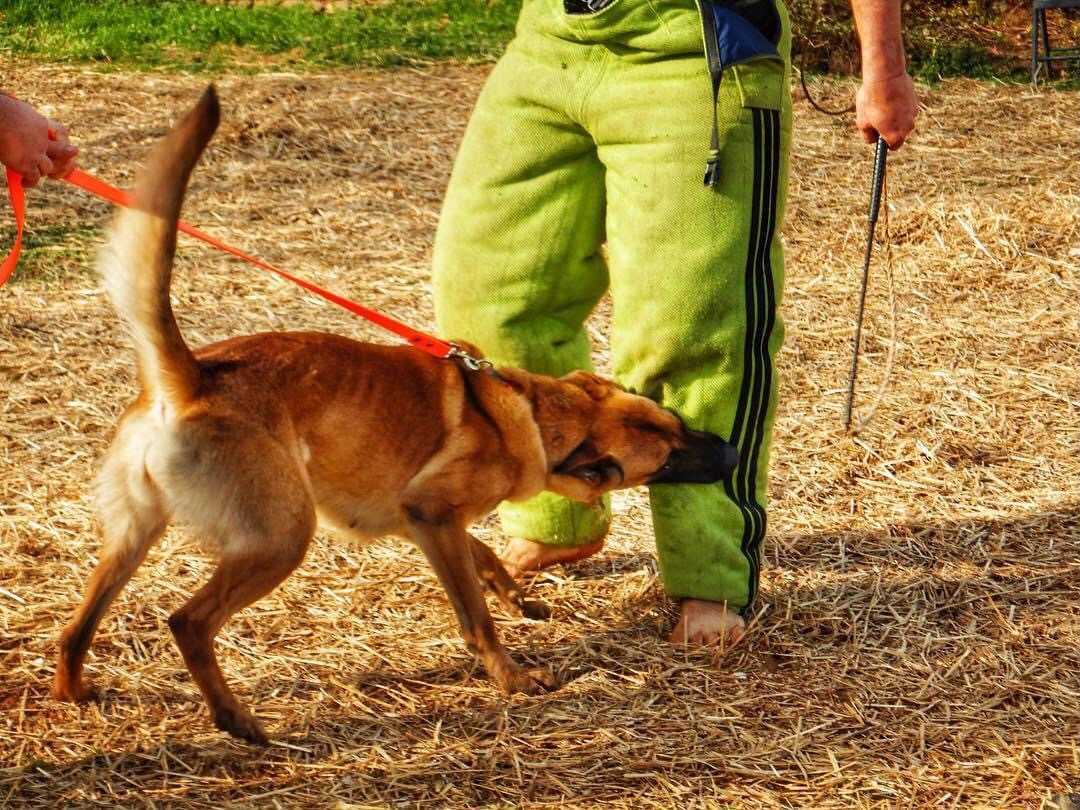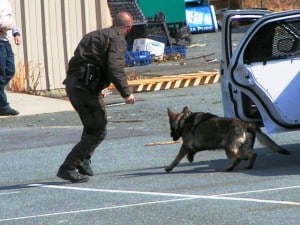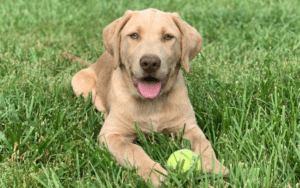Teaching a dog to correctly grip during apprehension drills and in an operational environment is critical to the safety of both law enforcement officers and the individuals being apprehended. Only dogs that are capable of biting safely – ideally every time – should be used on deployments.
A solid foundation of quality grip and bite training is very important in the process of building the skills that a solid apprehension K9 requires for their job. Unfortunately, many trainers place a great deal of emphasis on when to bite, while neglecting to teach dogs a solid foundation of how to bite. K9s that not only understand when to bite, but also possess quality training on how to do so, will always be more confident in training and on deployments. This is because they know what to do throughout the entire apprehension scenario.
Teaching a good grip has three main components, and it is very important that all three are taught correctly, as they do not always come naturally to a dog.
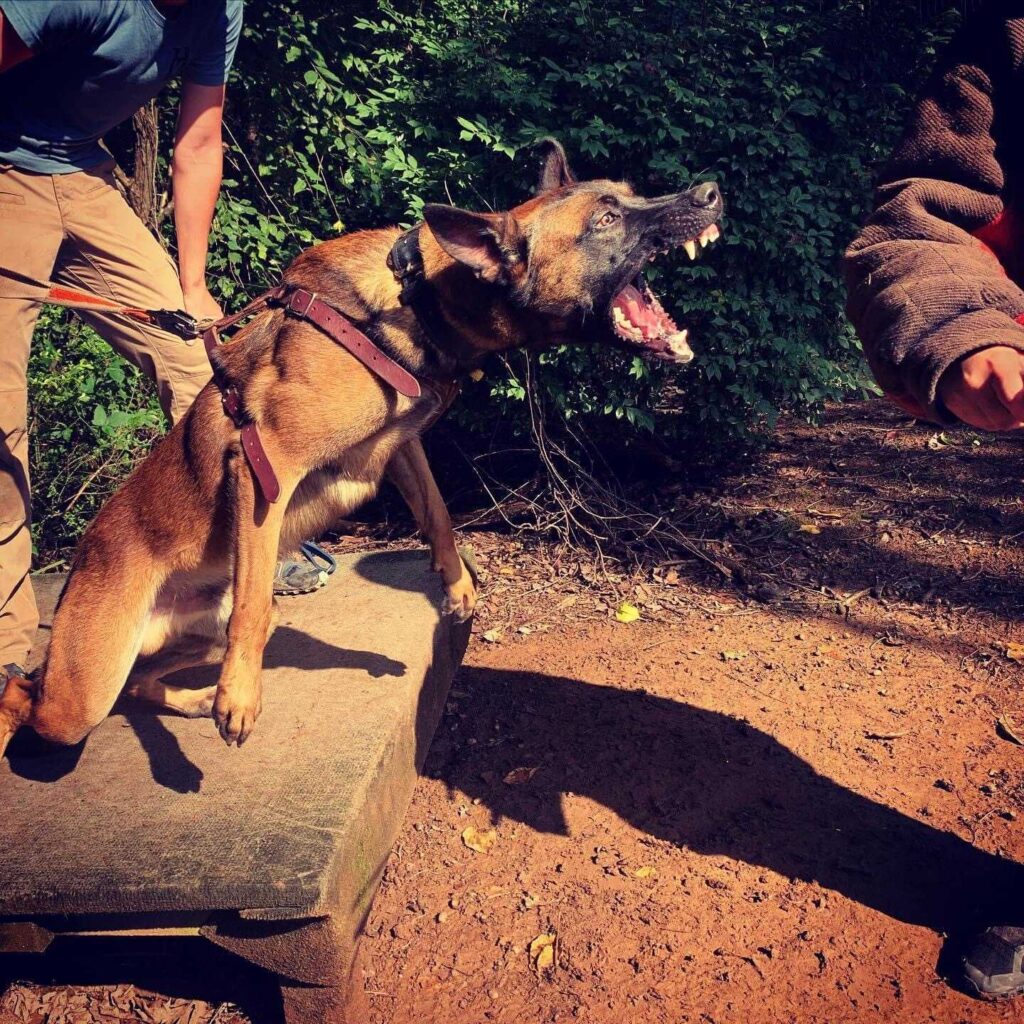
Component 1: Limit the amount your K9 pulls when biting
The first component necessary in training a correct grip is to ensure that a dog is moving into a grip and not pulling.
A dog that does not pull while on the bite will maintain their hold on an individual, while inflicting the smallest amount of physical damage possible. The reason why less damage occurs this way is because the process of moving around or pulling backwards can quickly tear or rip skin, which can result in irreparable physical damage or a dog even attempting to re-grip.
A dog that is countering into a bite will be applying most of their bite force with their molars and not with their canines or front teeth. The incisors (or front teeth) are used for scraping, and wild canines use them for tearing their prey in the wild. Teaching a police patrol dog not to use these teeth, but rather the molars behind them, allows the dog to bite a suspect without scraping or tearing their flesh. A suspect will likely experience some degree of puncturing from a dog’s molars; however, a lot less damage will occur because the dog is not utilizing their canines as a primary grip source.
A dog is trained to bite with a “deep” grip by countering into a bite, or punching in, and then being reinforced rather than being reinforced for tugging. The reinforcement in this instance will come from the decoy interacting with the dog at precisely the right moment. They will do this by moving bite equipment around as the dog demonstrates the behavior they are looking for.
A dog that will counter in rather than pull away will always be safer to deploy, as the suspect will not be able to move away from the dog, and the dog will still inflict as little damage as possible.
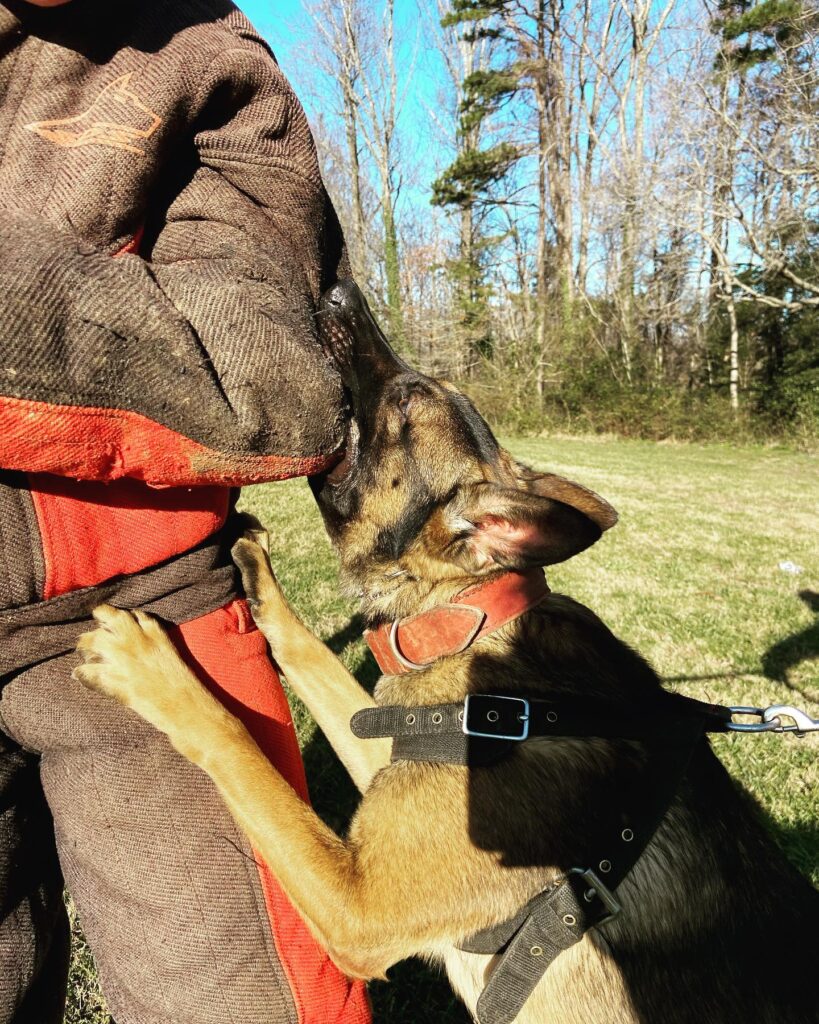
Component 2: Teaching your dog to stay in one spot when on the bite
Another important aspect of good grip demonstration is teaching the dog to stay in one spot, instead of trying to pull backwards or jump around on a bite.
On a correctly executed bite, a dog will bite and hold, and will only move inward if it needs to get a fuller grip. Having a dog maintain a more stationary position after biting is extremely important for two reasons:
- The subject being apprehended will have as little physical damage inflicted on them as possible
- The safety of the dog’s handler and back up officers will be maximized.
Once a suspect has been apprehended, the handler and other officers must approach the subject and safely restrain them if necessary. If a dog is not capable of remaining in one place and calmly holding onto the subject, everyone else is at risk of the dog re-gripping on an officer or inducing more damage on the suspect on an unnecessary re-grip. Most of the time when dogs move around, typewrite or chew, it is due to the dog not fully understanding how to keep the fight with the decoy going. They exhibit these behaviors in an attempt to keep the game going by moving around, relocating or re-gripping – which is essentially their attempt at keeping their “prey” alive for longer.
Dogs that are consistently reinforced for one consistent motion are much more likely to remain in one spot, because they know that even if the decoy is passive for a period of time, they will eventually get the opportunity to keep the game going.
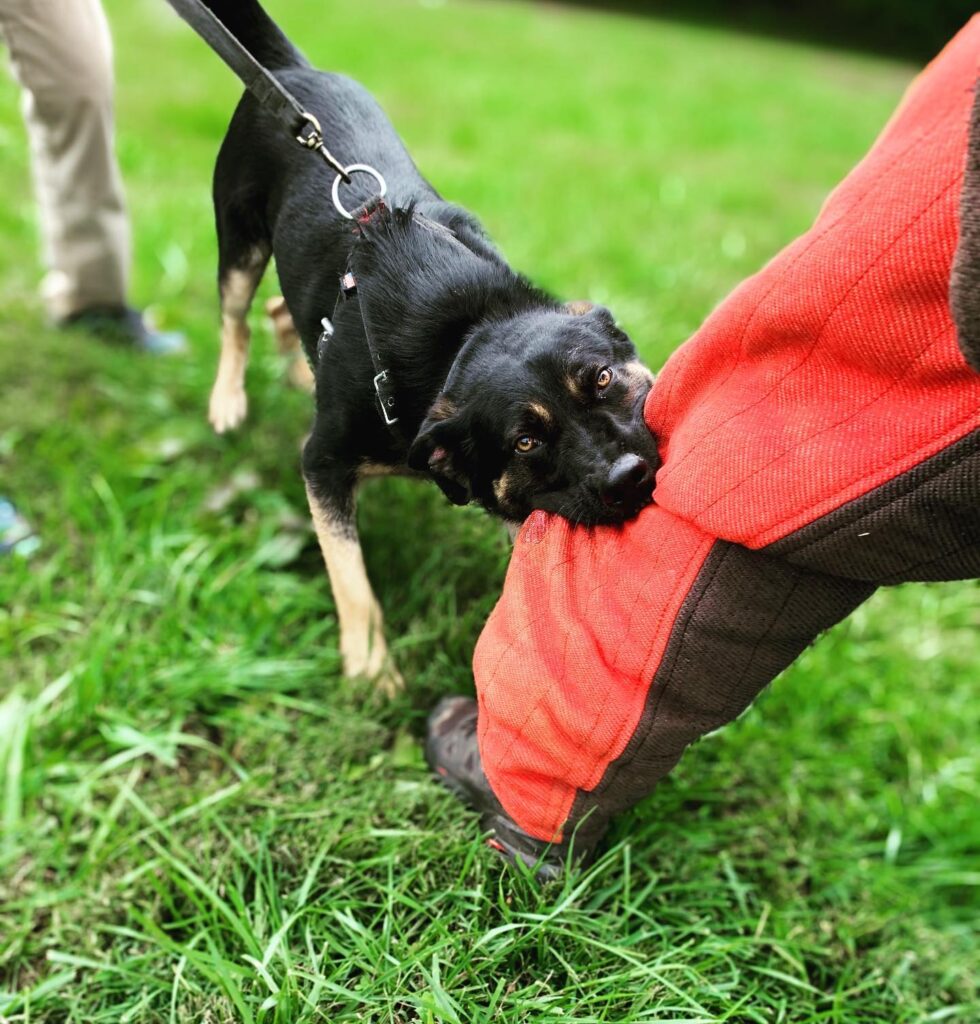
Component 3: Maximize your dog's natural bite force
The final aspect of teaching a good quality grip is working to maximize a dog’s natural bite force.
Bite force pertains to the amount of steady pressure exerted from the jaw muscles onto a surface. Teaching a dog to maximize their bite force and hold will keep them from slipping off a bite during training or deployment, consequently avoiding an unnecessary re-grip. Re-grips can be dangerous because they result in unnecessary physical damage to the victim or dog, injury to officers, and other undesirable consequences.
A dog who understands to apply and hold pressure will be more reliable, easier to work with, and more effective in apprehending suspects. By maximizing bite force during training and deployment, dogs also reduce the chance of injuring themselves. If an item that a dog is holding is allowed to slip around their mouth, it can get caught on their smaller, more delicate front teeth. This can actually result in teeth getting unintentionally broken or pulled if the subject or decoy is pulling away.

In conclusion
Ensuring that a dog’s foundational bite work training implements these three components will optimize the potential and effectiveness of a police K9.
Using K9s whose training focuses more on when to bite – and less on how – can result in injury, ineffective apprehension and other undesirable consequences when it really matters. A solid grip should always be trained before moving on to any other focal point of training while working with an apprehension dog. This basic foundation will set the dog up for success in every other facet of their work because an effective bite increases their overall effectiveness and confidence on the job.
In three straightforward steps – counter into a bite, hold a bite in one location and apply and maintain bite force – a handler can have a safe and effective apprehension K9.

